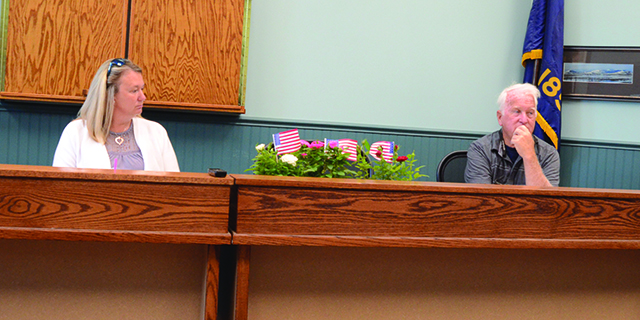Common Sense
Published 6:00 am Wednesday, June 19, 2019
Common sense.
People like to talk about finding “middle ground,” but I think the object of discussions, when there are widely divergent points of view, should be to find some common sense ground that most sides can stand on.
Trending
In a recent “TED Talk” on the radio, a very smart guy delivered a sermon on the new meats—grown in labs or made from plant materials or cobbled together in some scientific way to give us the protein we need without cows. His big concerns were methane and health.
I read Michael Pollen years ago, and found his descriptions of meat packing plants and the feedlot to table process devastating. Pollen didn’t have problems with cows, but with what we have done to them. The thing that sticks in my mind is corn. Cows do not easily digest the corn we now like to fatten them with; they have evolved a complex digestion system over thousands of years that makes them the perfect harvesters of grasses.
Corn—in our cows or in our gasoline—is a complex issue for a number of nutritional, political, botanical, and economic reasons, and the subject for another day. Back to cows and other grazing animals. Over millennia, grazers, humans, and a wide range of natural environments have developed complex and complementary relationships. In the far north caribou and reindeer graze on lichen, sedges, and grasses, and have provided food and clothing for the people forever. In the deserts of Asia and North Africa camels find and efficiently use sparse vegetation and water and have provided food, clothing, and transportation for the people forever.
Cows and sheep came out of the Middle East to feed and cloth Europeans, and then Americans and now people across the world. There is no doubt that some of our—human—meddling with and use of these grazers has not been good. We don’t need the marbled meat in the quantities we Americans have become accustomed to. But how about grass-fed beef? Cows and sheep graze on ground that often cannot be easily planted and harvested for food crops—and even when they graze on flat farm ground and eat hay produced on farm ground they are part of a complex relationship between soil and animal that has proved effective over time.
This week the Wallowa County McClarans are celebrating the 100th anniversary of their family ranch. It has been, I think, a fine example of sensible—and thoughtful—agriculture on hard ground. The ground is the canyon country of the Snake River and its tributaries. Joe McClaran started with sheep. His son, Jack and wife Marge, converted to a cattle operation. It’s remarkable today in that the fourth generation of operators is women—three sisters, the children of Scott and Vicki McClaran. The ranch is a leader in a movement—of women running ranches—that is growing in the inland West.
Adaptation is key to agricultural success. When students in a class I taught at Eastern Oregon asked Scott McClaran what kind of cows he favored, he said “our cows,” meaning cows raised on the ranch, adapted to the canyons. Although they occasionally have to bring in new blood, the McClarans have not been concerned that the cows are black or brown, this breed or that. Common sense.
Trending
In a more recent conversation, Scott told me that he thinks we are finally getting it right about agriculture in the Zumwalt—after trying small homesteads, fruit trees and potatoes, we’ve learned to use the ups and downs of the country through the season for grazing. Kind of like the Nez Perce did.
The Indians grazed horses from about 1730 and cows from the 1840s in the canyons, picking up the best of what white settlers brought them and adapting things to their own cultures.
Which puts me in mind of more common sense. For hundreds of years, European settlers in the new world tried to make Indians white, “take the Indian out of him,” they said, and “save the man.” Take away language, religion, ceremony, and hair; do things our way. Today we are listening to Indians as we deal with wildfire and salmon, and applauding their dancing and drumming in the old Nez Perce lands.









